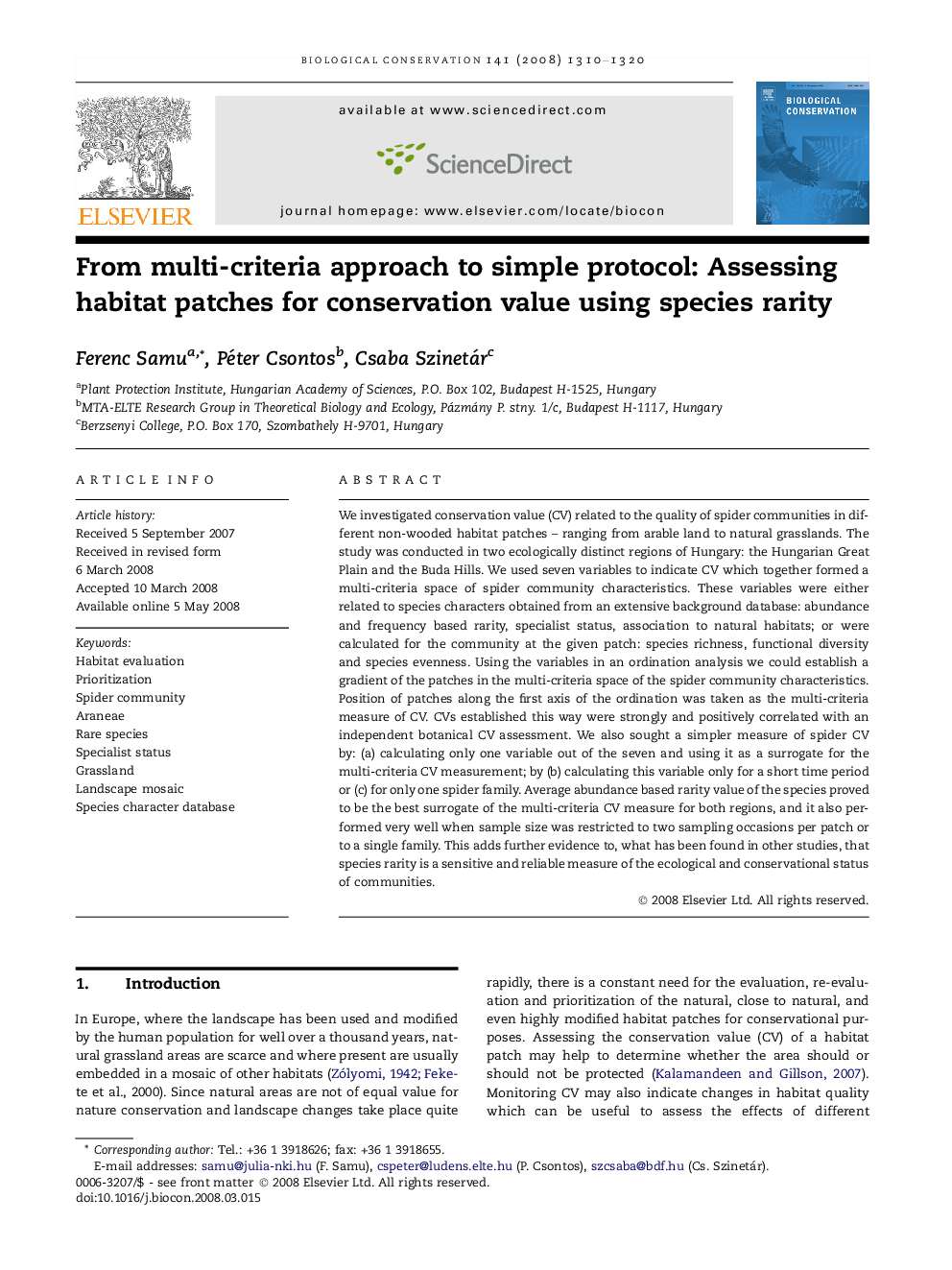| Article ID | Journal | Published Year | Pages | File Type |
|---|---|---|---|---|
| 4386953 | Biological Conservation | 2008 | 11 Pages |
Abstract
We investigated conservation value (CV) related to the quality of spider communities in different non-wooded habitat patches - ranging from arable land to natural grasslands. The study was conducted in two ecologically distinct regions of Hungary: the Hungarian Great Plain and the Buda Hills. We used seven variables to indicate CV which together formed a multi-criteria space of spider community characteristics. These variables were either related to species characters obtained from an extensive background database: abundance and frequency based rarity, specialist status, association to natural habitats; or were calculated for the community at the given patch: species richness, functional diversity and species evenness. Using the variables in an ordination analysis we could establish a gradient of the patches in the multi-criteria space of the spider community characteristics. Position of patches along the first axis of the ordination was taken as the multi-criteria measure of CV. CVs established this way were strongly and positively correlated with an independent botanical CV assessment. We also sought a simpler measure of spider CV by: (a) calculating only one variable out of the seven and using it as a surrogate for the multi-criteria CV measurement; by (b) calculating this variable only for a short time period or (c) for only one spider family. Average abundance based rarity value of the species proved to be the best surrogate of the multi-criteria CV measure for both regions, and it also performed very well when sample size was restricted to two sampling occasions per patch or to a single family. This adds further evidence to, what has been found in other studies, that species rarity is a sensitive and reliable measure of the ecological and conservational status of communities.
Related Topics
Life Sciences
Agricultural and Biological Sciences
Ecology, Evolution, Behavior and Systematics
Authors
Ferenc Samu, Péter Csontos, Csaba Szinetár,
